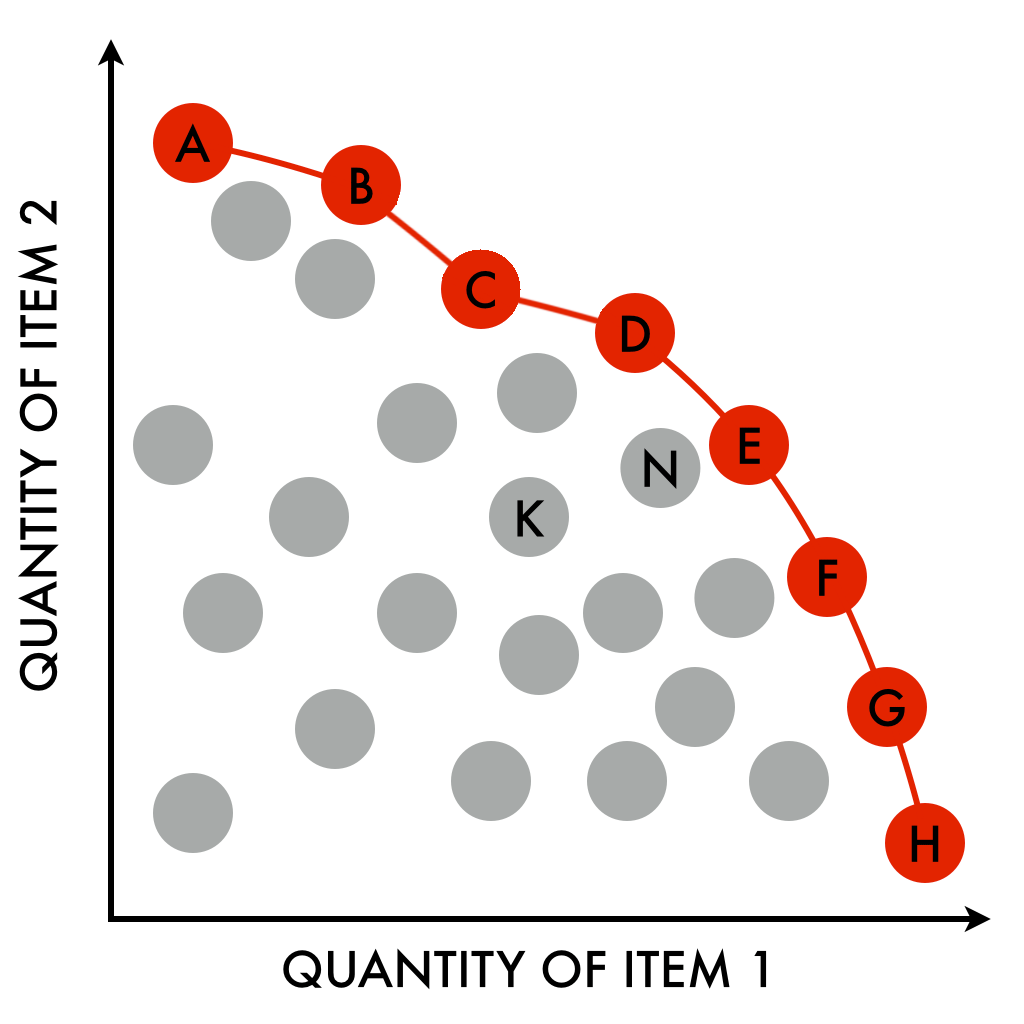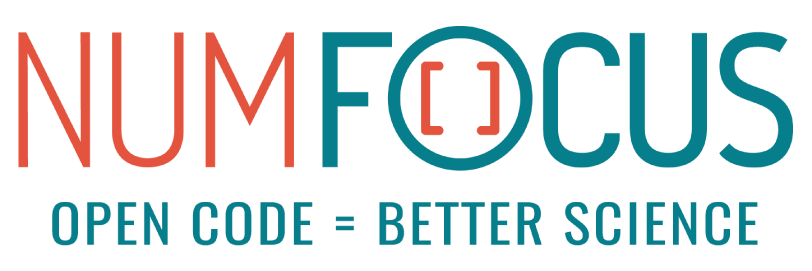This repository is dedicated to tutorials to learn and practice optimising for multiple parameters using Pareto Fronts.
Optimising for multiple objectives is a non-trivial task, especially when they are in conflict. For example how can one best overcome the classic trade-off between quality and cost of production, when the monetary value of quality is not defined? In this hands-on Python tutorial you will learn about Pareto Fronts and use them to optimise for multiple objectives simultaneously.
This hands-on tutorial is geared towards anyone interested in improving their optimisation skills (e.g, analysts, scientists, engineers, economists), in which you will learn and implement
The only requirements are basic usage of numpy and matplotlib. The maths required is highschool level.
Here you will find Jupyter notebooks with which you will apply lessons and tools learned to the simple Knapsack problem. You will program for filling a bag with packages with the objective of minimising the bag weight while maximising its content value.
Scheduled Live Session: May 13th 2021 11:00-13:30 ET (16:00-18:30 BST)
Welcome and thanks for attending this tutorial on multi-objective optimisation!
- The shortcomings of the common practice of Single Objective Optimisation
- What Pareto Fronts are and why they yield better solutions
- Applying Pareto Fronts to Genetic Algorithms to search for optimal solution in intractable search spaces.
- Applicability in the real world
In these 2.5 hours we will cover the following.
Important Notes:
-
Please be mindful that the agenda is divided to Live parts and Recorded. You will be instructed when to use each.
-
All the recorded parts and links to the Jupyter notebooks may be found in this Slide Deck and this README file.
-
If you are familiar with the basics of Pareto Fronts and Genetic Algorithms, feel free to jump right into the fully annotated notebooks.
-
Welcome, Motivation, Instructions (10 minutes - Live Stream)
--- Recorded Sessions start he, please use this Slide Deck --- -
Intro to Pareto Fronts (15 minutes)
-
Mapping Decision Space to the Objective Space (5 minutes)
-
Break (10 minutes)
-
Intro to Pareto Optimisation with Genetic Algorithms (15 minutes)
-
Hands On: Pareto Fronts with Genetic Algorithms (35 minutes)
--- Live Stream (Slide Deck ends) --- -
Break (5 minutes)
-
Applicability to real world problems (10 minutes)
-
Real World Applications (Time permitting)
- Case study: Protein Design (5 minutes)
- Case study: Machine Learning HyperParameter Tuning (5m)
-
Summary and Discussion (5 minutes)
You can also access all the material in this repository, including video recordings.
In case the videos do not work on the Slide Deck, you may access directly via You Tube as follows:
- Welcome and Intro (5 minute video)
- Introduction to Pareto Fronts (13 minutes in 2 videos: 1, 2)
- Hands On: Pareto Fronts (25 minutes in 3 videos: 1, 2, 3)
- Decision and Objective Space (3 minute video)
- Introduction to Pareto Optimisation with Genetic Algorithms (12 minutes in 2 videos: 1, 2)
- Hands On: Pareto Optimisation with Genetic Algorithms (35 minutes in 5 videos 1, 2, 3, 4, 5)
- Summary and Discussion (5 minute video)
It has been delivered in PyData Global 2020 (abstract).
and hosted on NumFocus Academia (old broken link)
Multi-Objective Optimisation, also known as Pareto Optimisation, is a method to optimise for multiple parameters simultaneously. When applicable, this method provides better results than the common practice of combining multiple parameters into a single parameter heuristic. The reason for this is quite simple. The single heuristic approach is like horse binders limiting the view of the solution space, whereas Pareto Optimisation enables a bird’s eye view
Real world applications span from supply chain management, manufacturing, aircraft design to land use planning. For example when developing therapeutics, Pareto optimisation may help a biologist maximise protein properties like effectiveness and manufacturability while simultaneously minimising toxicity.
This hands-on tutorial is geared towards anyone interested in improving their optimisation skills (e.g, analysts, scientists, engineers, economists), in which you will learn and implement:
- The limitations of the common practice of combining multiple parameters into one heuristic.
- Pareto Fronts: the notion in which there may be a set of trade-off solutions which are considered equally optimal.
- Application of the Pareto Front method to Evolutionary Algorithms to find optimal solutions in an intractable search space.
- Applicability in the real world
We will use Python and work in a Jupyter notebook environment.
The notebooks will help you learn to solve for multiple objective optimisation problems and visualise results.
- In
01_knapsack 2D_exhaustive.ipynbyou will optimise for the knapsack problem in an exhaustive solution space. Here you will learn:- The limitations of the commonly practiced Single Objective Optimisation.
- Pareto Fronts: identifying by eye Pareto optimal solutions within a distribution as well as pseudocode for selecting these Non-Dominated solutions.
- Optimisation concepts Decision Spaces and Objective Spaces. These concepts are useful to determine the applicability of Pareto Optimisation.
- In
02_knapsack_2D_stochastic.ipynbyou optimise for the knapsack problem in an intractable search space. Here you will learn:- Stochasticity and Pareto front approximations
- Genetic Algorithm basics with an emphasis on Pareto fronts as the selection function.
- To track the learning progress of a Genetic Algorithm by means of the evolution of Pareto front approximations.
- Improving population diversity by niching.
For those interested in material before the tutorial, I kindly refer you to:
- DEAP - a package for quick prototyping of evolutionary algorithms
- Pymoo - a package with multi-objective optimization algorithms
- Pareto Front example in an Excel workbook (provided by vertexvortex from Reddit).
For those who want extra curriculum I highly suggest any paper on the topic by Eckart Zitzler. His Ph.D thesis is an excellent read.


